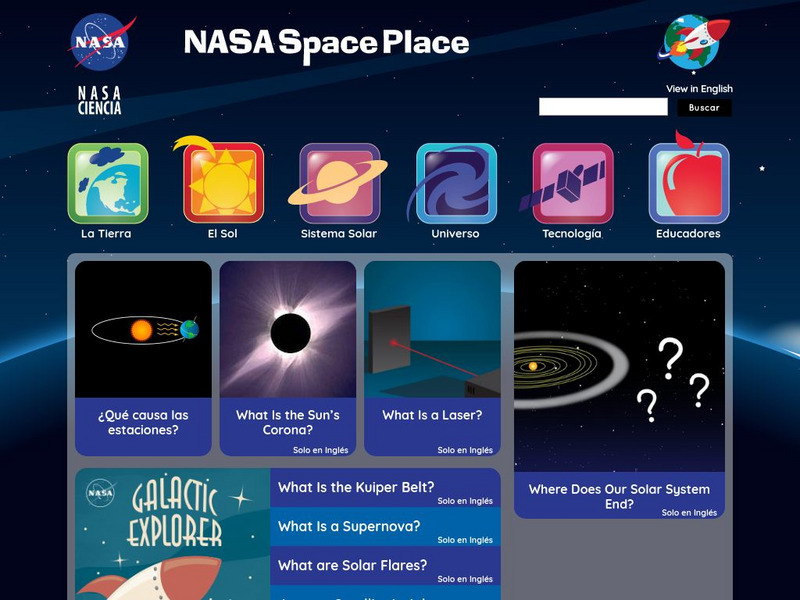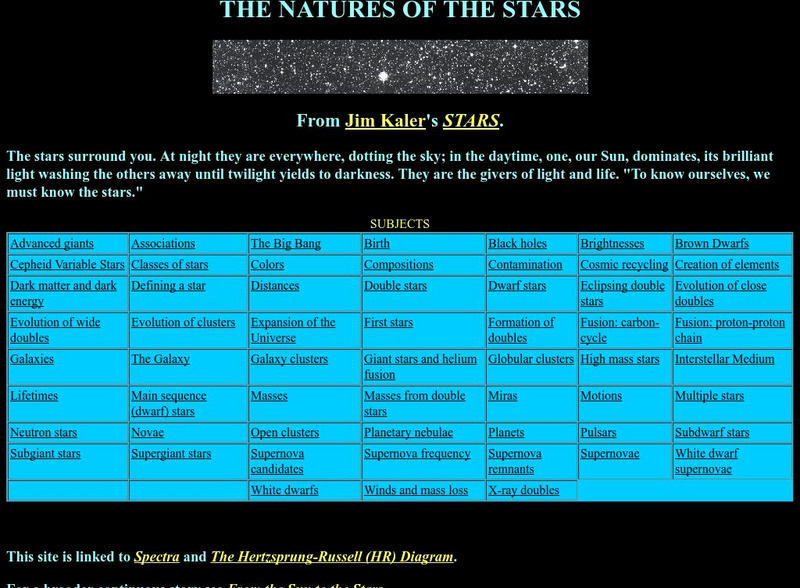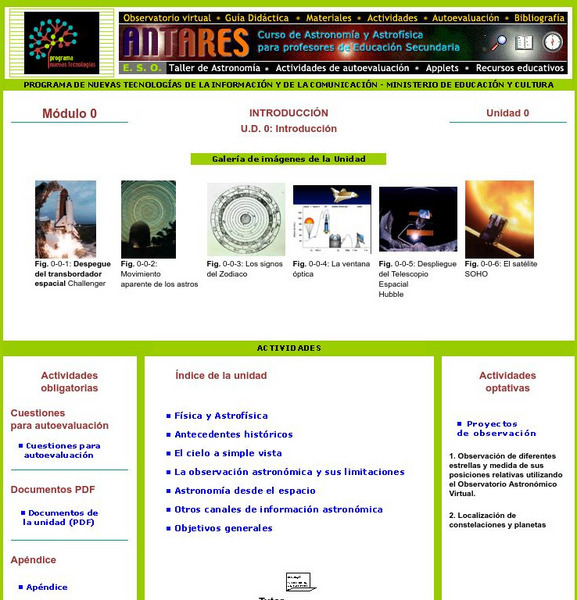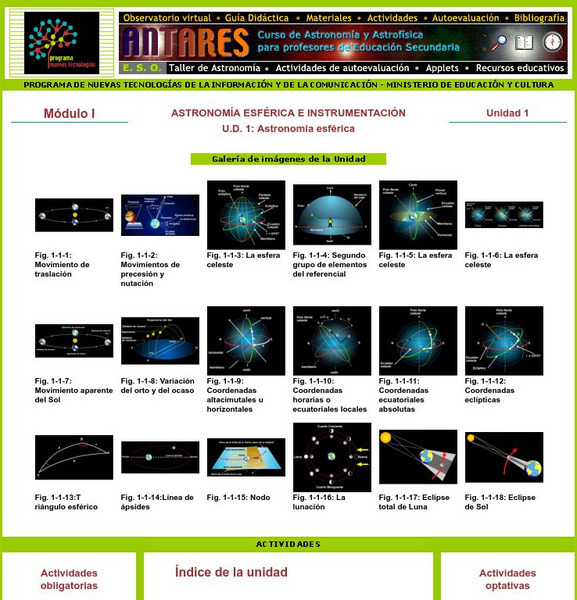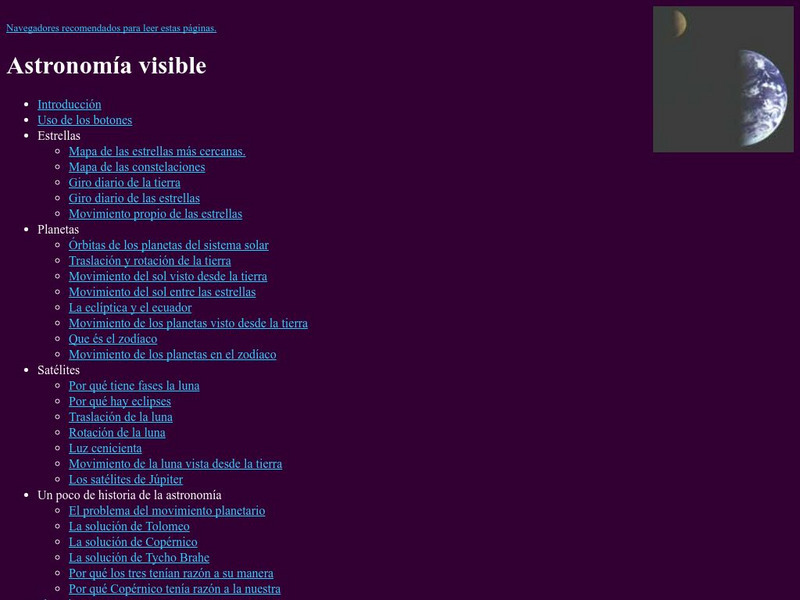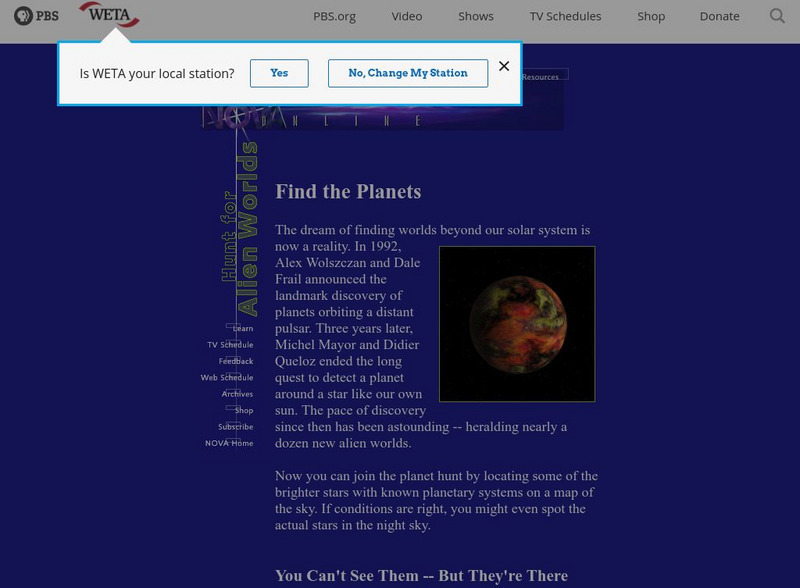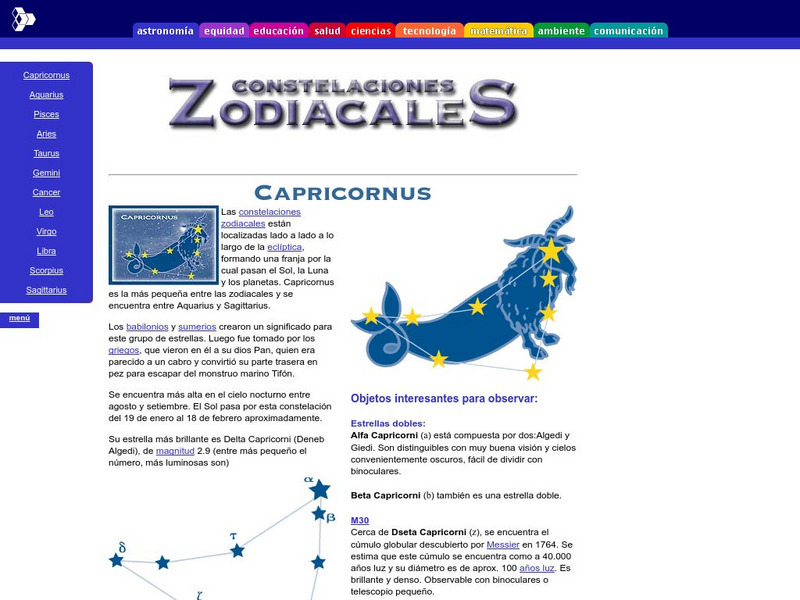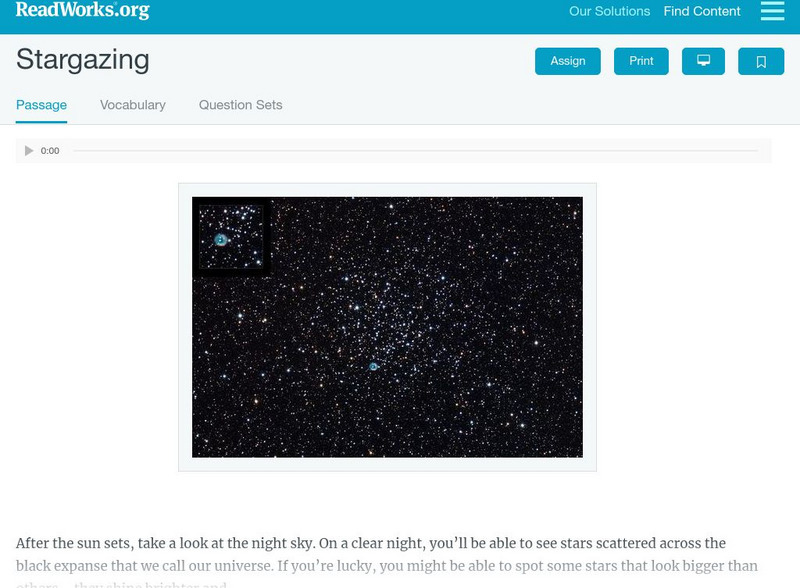Other
Sea and Sky: A Tour of the Solar System
Take a virtual tour of the solar system starting with detailed information about the sun.
NASA
Nasa Space Place: El Space Place
NASA's space science site for kids - en Espanol. Features a wide range of activities, including games, projects, animations, and more. Also contains useful information on basic physics, chemistry, and other natural sciences, offering...
European Space Agency
European Space Agency: Esa Kids: Our Universe: Supernovas
A basic overview of supernovas. Links to more information about starts, planets and other objects in our solar system and galaxy are included.
Cornell University
Cornell University: Astronomy: Frequently Asked Questions
Definintions for pulsars, millisecond pulsars, the evolution of pulsars, neutron stars and "Black Widows." Features related links.
Cosmos 4 kids
Cosmos4 Kids: Everything Gathers
Understand that smaller parts make up the larger parts of our solar system. See that gas and dust come together to form a star, small rocks and asteroids come together to form planets, and so on. This page is a reference page that...
University of Illinois
University of Illinois: Stars and Constellations: Neutron Stars and Pulsars
This resource provides a brief description of the relationship between a neutron star and a pulsar. It details the pulsing rate and death of a pulsar.
Ministerio de Educación (Spain)
Ministerio De Educacion: Introduccion Modulo 0
Observe different stars and measure its relative position utilizing the Virtual Astronomical Observatory.
Ministerio de Educación (Spain)
Ministerio De Educacion: Atronomia Esferica Modulo I Unidad 1
Recognize the major constellations and learn about the sky during the different seasons of the year. You will also be able to measure the height of the mountains of the moon.
Smithsonian Institution
Smithsonian Learning Lab: The Universe, an Introduction
Start with the questions all students ask: How big is the universe, how far away are the planets and stars, how did they form and when, how do they move and why? Build on their natural curiosity. The Smithsonian, in cooperation with...
Ministerio de Educación (Spain)
Ministerio De Educacion: Astronomia Visible
This site has maps of the nearest stars and constellations. Earth and star daily rotation, proper motion of the stars and many other topics about the solar system are also shown.Read phonetically
TED Talks
Ted: Ted Ed: Que Es Una Estrella?
A star is an astronomical object that shines with its own light, that is, it can produce its own radiation, has an internal source of energy, and can be held in space due to its own gravity. Learn a little more about the characteristics...
TED Talks
Ted: Ted Ed: How to Detect a Supernova
Just now, somewhere in the universe, a star exploded. In fact, a supernova occurs every second or so in the observable universe. Yet, we've never actually been able to watch a supernova in its first violent moments. Is early detection...
Space Telescope Science Institute
Amazing Space: Star Light Star Bright
Learn all about stars and the electromagnetic spectrum in this series of activities.
PBS
Pbs: Find the Planets
Find out how astronomers locate new planets by observing the traits of the stars they orbit. Get some tips at locating stars with the help of star maps.
Other
National Research Foundation: How Far? How Big? How Many?
Using light as our measuring stick in space, science site provides all types of fun facts using light years and seconds as a reference.
Fundación Cientec
Fundacion Cientec: Constelaciones Zodiacales
This site provides detailed history and star cluster location information for each zodiac constellation. Also includes links (mostly to Wikipedia pages) to additional information for keywords that appear in the articles.
NASA
Nasa: Astronomy Picture of the Day: Crab Nebula and Geminga in Gamma Rays
Explains that pulsars would be the brightest objects in the sky if we could see gamma-rays.
NASA
Nasa: Space Place: Where Does Interstellar Space Begin?
Find out about interstellar space, and what characterizes this part of space outside of the heliosphere.
NASA
Nasa: Imagine the Universe: How Big Is That Star
This 2-5 day lesson plan investigates the diameter, radius and mass among several stars in order to understand stellar behavior, particularly in a binary system.
CK-12 Foundation
Ck 12: Earth Science: Distance Between Stars
[Free Registration/Login may be required to access all resource tools.] How to use parallax to measure distances to stars.
Read Works
Read Works: In Our Galaxy, Far, Far, Away
[Free Registration/Login Required] An informational text about earth-like planets in other solar systems. A question sheet is available to help students build skills in reading comprehension.
Read Works
Read Works: Stargazing
[Free Registration/Login Required] An informational text about stars in the night sky. A question sheet is available to help students build skills in reading comprehension.
CK-12 Foundation
Ck 12: Physical Science: Gamma Rays
[Free Registration/Login may be required to access all resource tools.] Explores what gamma rays are and their sources, and the dangers and uses of gamma rays.
American Museum of Natural History
American Museum of Natural History: Ology: What Do You Know About Stars?
Test your knowledge with this ten-question quiz on stars. Focusing on stars in the Milky Way galaxy, questions range from the life cycle of a star to the number of stars in our galaxy.



